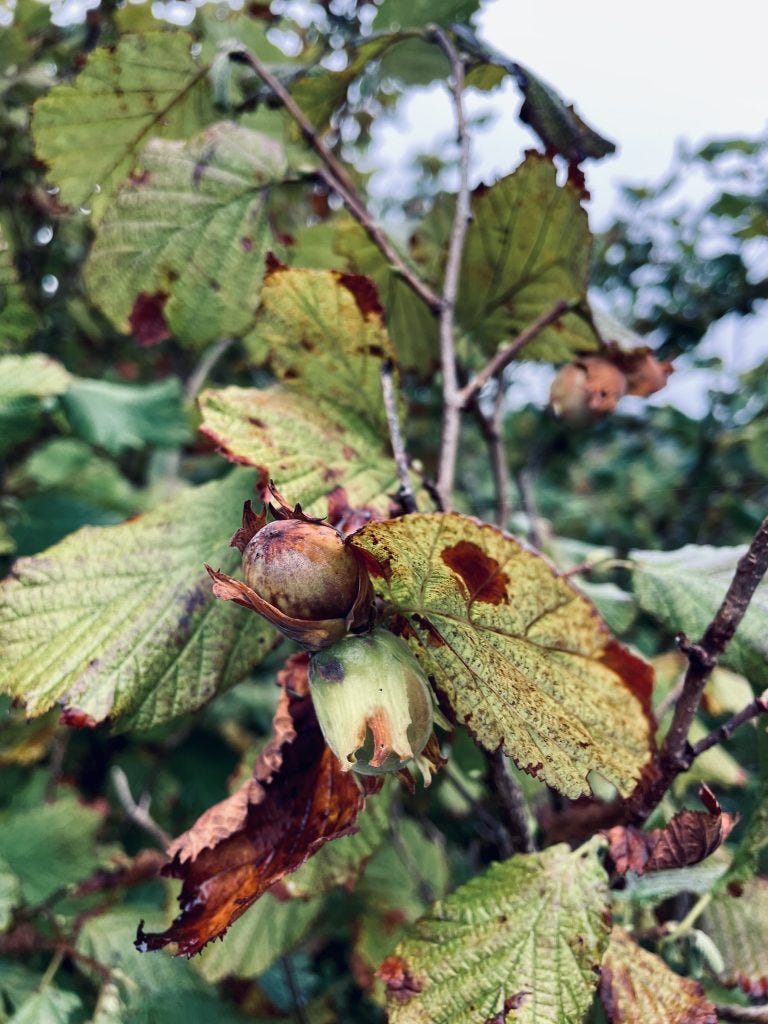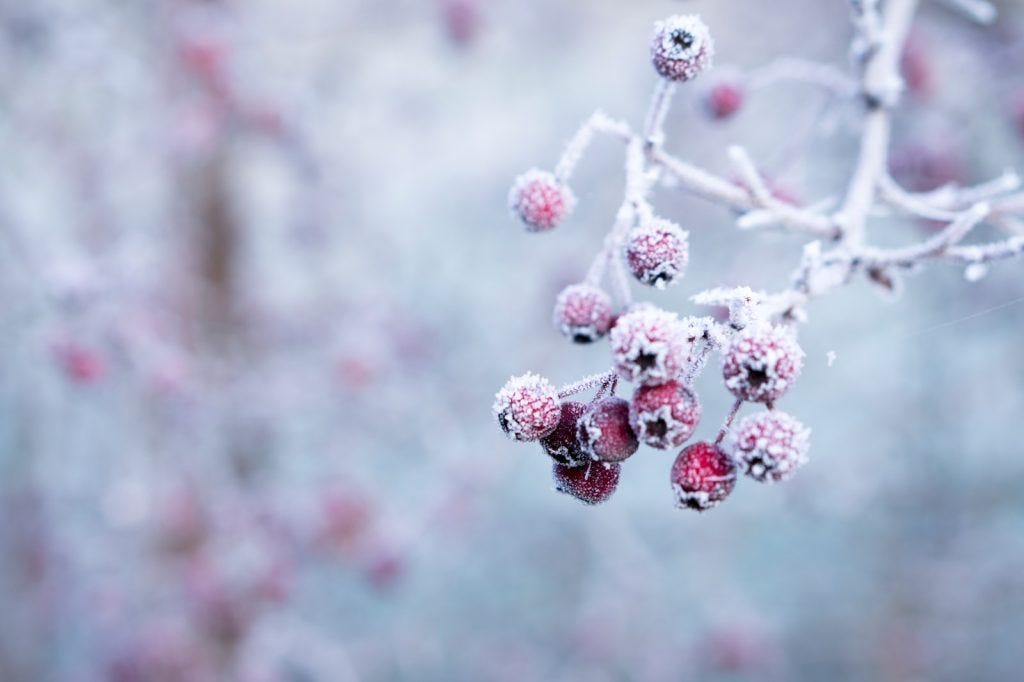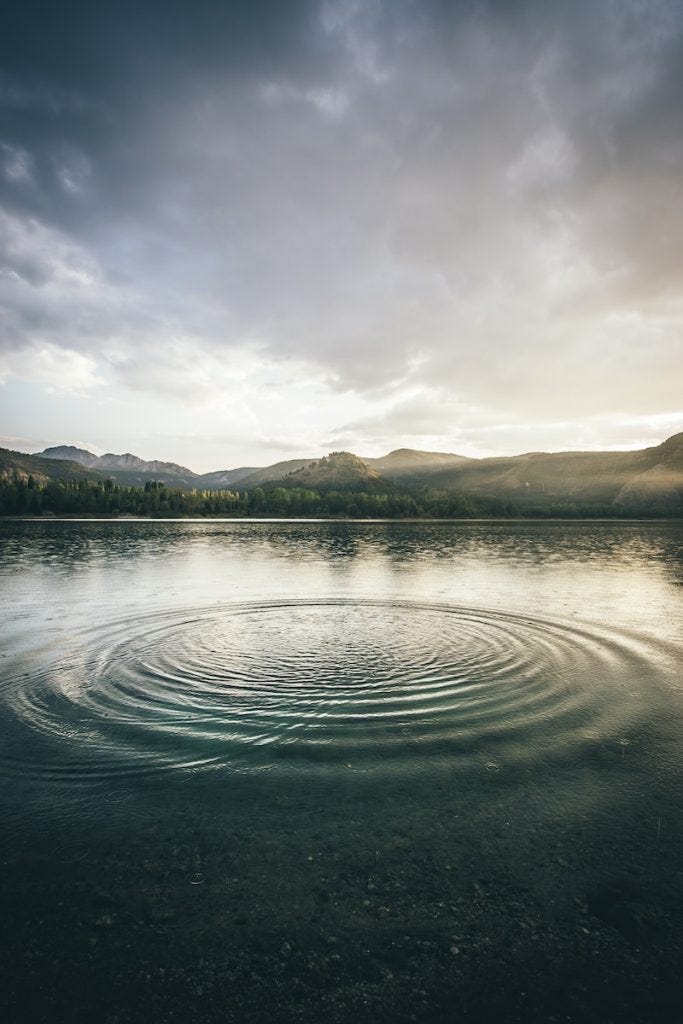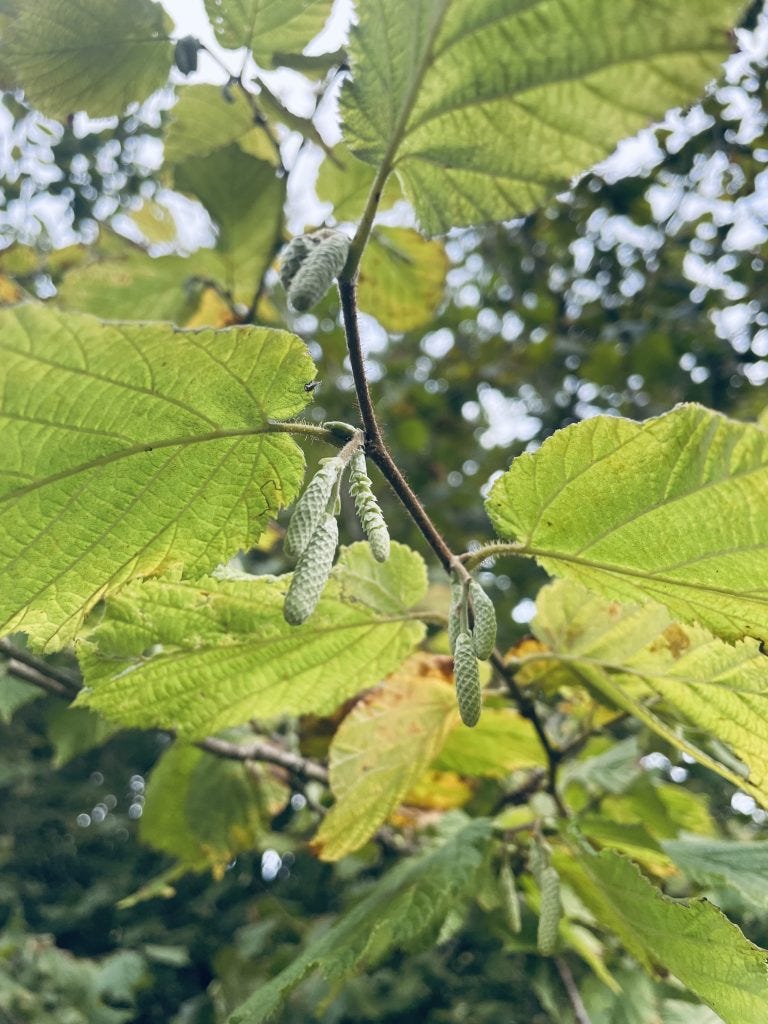Ever Widening Circles
The boreen borders a small field before turning sharply uphill. It becomes woodland here: hawthorn, blackthorn and hazel that have outgrown scrub to become beautiful, mature trees. The remains of stone walls are softened with moss, but I build them into dwellings and imagine the lives of the people who lived here. Above this cluster of cottages, the boreen passes a hawthorn standing out on its own, a bright, thorny beacon in the woodland. There is a touch of the ancient in the spread of its branches, clotted with berries and wrapped in oakmoss. Last week, I crawled into the leaf mould and closed my eyes. That is when I heard it.
The sound of the Aos Sí* has been described as the tinkle of a bell, but I would liken it to the clink of teeth on a china cup; I could taste it as much as hear it. Like a shiver of wind over water, like mistfall, or the startle of a blackbird in a thicket. It gave me a synesthetic connection to the living things who have passed through that place: our ancestors who gathered in the sacred grove; fox who made her home among the roots; the lichen that shrinks and expands in response to rain; celebrants who took sprays of blossom to usher in spring and healers who picked berries for broken hearts.
“Is that a true story, mum?” my seven-year-old asks.
“Yes, it is true, and it is a story.”
Beyond the ancient hawthorn, the boreen steepens and it is dark beneath the hazels. This is an Atlantic Hazel woodland, unique to the carboniferous soil in this part of the world and one of the first species to colonise post-Ice Age Ireland. Its straight, thin branches shoot like spears from a central stool and are laden with ripening nuts. I fill my pockets until I reach the clearing at the top of the hill.
Here, the Sleeping Giant appears above the road to Manorhamilton, tucked beneath a blanket of cloud. If I turn my back on him, I see Lough Gill, the Isle of Inishfree and Killery Mountain in various hues of heather. Two hundred years ago a woman’s coat was dug from a bog on the slope of that mountain. Some say it dates to the 14th Century, others claim it is older still. I wonder if the wearer ever walked this hill and what her life might have been like. Maybe she too gathered nuts, haws and thick purple sloes? She must have read the land so differently from me. Where I see branches, she saw wattle, fence post, fish trap. I forage for fun, she ground nuts into flour and knew the tiny face of tormentil as a treatment for burns. I imagine her fastening the buttons on that woollen coat and I shiver in my layers of down – how did she make peace with the damp?
//
Like Little Foxes
I was taught a theology of endurance. The metaphor was a marathon, and I was to keep my eye on the prize. My challenge with this linear way of thinking is that I never quite worked out how to pace myself and I saw too many loved ones drop out along the way. The race analogy crops up in lots of other places too. During COVID-19 there was talk of ‘lost learning’ and the fear of ‘falling behind’. Someone asked me was my husband looking forward to leaving the ‘rat race’ with reference to his decision to take a break from the NHS. Perhaps for some this is a helpful way to frame life, learning and work but I find it deeply counterintuitive.
Our ancestors believed that a day began at nightfall. It began in darkness, with rest and silence. The Celtic new year starts on the 1st of November and the dark ferment of winter was understood to nurture new beginnings. It was a time to rest, dream and plan for the year ahead. The animals were slaughtered, the harvest banked, and the slow work of mending undertaken. This, too, is the wisdom of the earth. By early November the trees enter their winter sleep, the leaves they lost in the autumn cover seeds like a protective fleece while squirrel, dormouse and frog drift into a winter stupor. If we did not turn all the lights on, the cold days would be short, and our sleep would be long. We would give ourselves permission to curl like little foxes in our dens, lick our wounds and listen to the slow, patient beat of our hearts.
//
Wintering
‘Wintering is a moment of intuition, our true needs felt keenly as a knife.’
Wintering, Katherine May
The act of ‘wintering,’ as May writes about so beautifully, is an ancient practice that honours cyclical wisdom. It is an invitation to engage better with a time of the year that so many of us find difficult to bear. We need to reconsider how we talk about the dark and understand why we fear it. The wisdom of the seed is that life begins in the dark, it is the crucible that holds the disparate parts of our experience and transforms them into something beautiful.
The Celts divided the year in two: Samos, the bright half and Giamos, the dark half. Giamos runs from early November until the beginning of May. It is governed by the feminine principles of rest, regeneration, creativity and kinship. Samos runs from early May until the end of October. It is governed by the masculine principles of action, logic and the outward expression of our work. The wisdom of the Celtic wheel relates to the ability to cycle through these seasons and respond to the different energy of both.
Last winter, I hibernated as best I could. I went to bed early, kept pace with the moon and allowed myself to feel the knife edge of my needs. I refused to make any big decisions until the days began to lengthen. I do not say this lightly, but the fact that I am typing this with Killery Mountain humped like a toad on the horizon is due, in a large part, to the wisdom of wintering.
//
Once, I saw fox in broad, summer daylight. I pulled the car over and watched from the gate. Her front right leg was injured. It hung like the soft toy my daughter brought everywhere as a child – limp but essential. This was not fox as I knew her: sleek, lithe and fast. She did not belong in the brightness of day with the screeching magpie and brazen rook. I looked away until she was gone.
//
Everything Belongs
Someone told me recently that the problem with a circle is that you get stuck going round and round.
Not if the circle is a ripple.
Rainer Maria Rilke writes: ‘I live my life in ever widening circles.’ The beauty of a ripple is that it includes everything as it expands. It finds a place for all the things that have gone before and is grateful for the learning. Every version of myself, every iteration of my deepest longing, every mistake and good intention finds a home here. There is no need to be for or against; everything belongs.
This month marks the threshold from the bright half of the year to the dark half of the year. In modern life, we do all we can to soften the hard edges of winter. We light it up, warm it up, stay indoors and refuse to slow our pace as the build up to Christmas begins.
But what if we didn’t?
What if the path into winter was a spiral with light at its core? What if we trusted the descent into darkness because there is healing there for the parts of ourselves we have atrophied? What if we really believed in death and resurrection? What if we did less, gave one another permission to withdraw and turned out the lights when we were tired?
Maybe then we would unfurl in the spring like the bright spear of snowdrop. We would have stories to share, our hard-won treasure.
//
Rings
If I were to cut the trunk of the ancient hawthorn (and I wouldn’t dare), I could tell you how old it really is. The wide bands of soft wood between the lines relate to the summers of its life when water flowed through its xylem and resources were plentiful. However, we measure its growth from the hard, dark rings of the winters it has weathered.
Tree rings, each cradled in the next,
Each as evidence of what the world has offered
And how the tree has worked with it;
How one grew round the other,
Strengthening the core with its own essence.
- from Rings, Carmen Bugan
Once, we took a stump from a forest we love. When it was cleaned of moss and dirt, my son blackened it with a blow torch. The flame burned the heartwood until the growth rings stood proud. We covered the rings with black ink, then laid large pieces of paper over the stump. When I rubbed it, I felt the ripple of rings on my palm: it was felled at 33. The children gasped when we peeled back the paper – it was beautiful. As novice dendrochronologists, we read the story of our tree: its years of drought, an insect attack, and the early years of light deprivation. It was all there; a love letter to hang in our hall.
//
Between Fruit and Fallow
I retrace my steps down the hill where the boreen intersects the woodland and the darkness pools. Hazel holds the tension between fruit and fallow: the tight fists of nuts are clenched while the leaves learn to let go. I cut three lengths of branch to bring into my home. Beneath the broad leaves there is something else, too – catkins. These tiny, unremarkable pendants will hang all winter from bare branches. In late January, before the thought of spring, they will open and dangle as bright, pollen flares in the gloaming.
I arrange the branches in a vase - my bright, wonderful teacher.
//
Aos Sí* - The folk with many names who live in mounds beneath the earth. Call them fairies, supernatural beings, mythological munchkins, if you like. They inhabit the Otherworld where the edge between what is real and what is dreamed blurs and magical things can happen.








